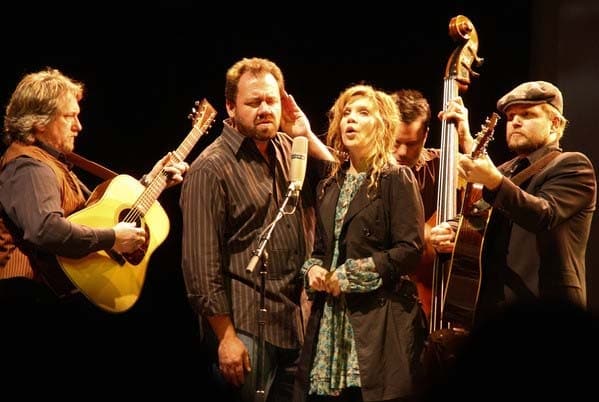
A Timeless Lament of Wanderlust and Woe
Ah, “Man of Constant Sorrow.” Just the title itself, for many of us, conjures up a cascade of memories, doesn’t it? It’s a tune that feels as ancient as the hills, woven deep into the fabric of American folk music, yet it received a truly remarkable resurgence in the early 21st century thanks to the Coen Brothers’ cinematic masterpiece, O Brother, Where Art Thou?. And it was within this enchanting film that the artistry of Alison Krauss and Union Station truly shone, even if their rendition on the soundtrack wasn’t the lead vocal for the most famous version.
Let’s clarify something important right off the bat for those who might be thinking of the catchy, radio-friendly version from the film. While Alison Krauss and her incredible band Union Station are integral to the O Brother, Where Art Thou? soundtrack, the iconic lead vocals on the various versions of “Man of Constant Sorrow” featured prominently in the movie and on the soundtrack were actually performed by Dan Tyminski, a member of Alison Krauss and Union Station. Krauss herself lends her ethereal harmonies and instrumental prowess to other tracks on the album, and Union Station‘s musicianship is undoubtedly woven into the tapestry of the soundtrack’s success. The soundtrack, released in December 2000, was an unexpected phenomenon, topping the Billboard 200 chart and going on to sell over 8 million copies, garnering a Grammy Award for Album of the Year in 2002. The various versions of “Man of Constant Sorrow” were undoubtedly the breakout stars of that album, propelling a centuries-old folk tune back into the public consciousness with a vigor few could have predicted.
The story behind “Man of Constant Sorrow” is as winding and enigmatic as the dusty roads traversed by the song’s protagonist. It’s a traditional American folk song, its origins shrouded in the mists of time, with various versions and lyrical permutations emerging over generations. The earliest known publication dates back to around 1913, when a partially blind Kentucky fiddler named Dick Burnett included it in a songbook titled “Farewell Song.” Some believe Burnett may have tailored an existing melody or theme to fit his own experiences of blindness and hardship. Later, in 1928, Emry Arthur recorded a version titled “I Am a Man of Constant Sorrow,” which solidified the name we largely know today. Over the decades, it passed through the hands and voices of countless musicians, including country legends like The Stanley Brothers (whose 1950 recording was particularly influential) and even folk revival icons such as Bob Dylan, each adding their own subtle inflections and interpretations.
At its core, “Man of Constant Sorrow” is a lament, a mournful cry from a soul perpetually adrift. It speaks of an individual, often a man, burdened by a lifetime of trouble, sorrow, and wanderlust. The lyrics paint a picture of a journey, a constant movement from place to place, leaving behind loved ones and familiar landscapes, always pursued by an unseen affliction. “I’ve seen trouble all my days,” the refrain echoes, resonating with anyone who has felt the weight of life’s hardships. It’s a song about farewells – to home, to loved ones, to fleeting moments of happiness. There’s a poignant sense of resignation, a weariness that permeates every note, yet also a glimmer of enduring hope, often expressed in the promise of a reunion on “God’s golden shore.” This duality – the persistent sorrow interwoven with a yearning for peace beyond this earthly realm – gives the song its enduring power.
For older readers, the resonance of “Man of Constant Sorrow” runs particularly deep. It evokes a time when hardship was a more visible and tangible part of life, when people truly knew what it meant to struggle, to leave home for the promise of a better life elsewhere, or simply to escape the clutches of misfortune. The raw, unvarnished emotion embedded in its melody and lyrics speaks to the universal human experience of pain, loss, and the eternal search for solace. The instrumentation, particularly as masterfully presented on the O Brother soundtrack by artists like Alison Krauss and Union Station with their exquisite bluegrass and traditional country leanings, harks back to a simpler era, to porch pickin’ and communal singing, where music was a balm for the weary soul and a voice for the unspoken sorrows. It’s a reminder of the timeless power of storytelling through song, a legacy passed down through generations, each rendition adding another layer to its rich and sorrowful history. To hear it now is not just to listen to a song; it’s to remember, to reflect, and perhaps, to find a kinship with that constant sorrow that, in its own way, connects us all.